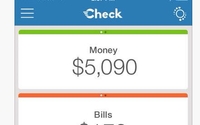 While many consider point of sale a key if not the key area
of mobile payments, there are other aspects of payments that seem to growing.
While many consider point of sale a key if not the key area
of mobile payments, there are other aspects of payments that seem to growing.
There is, of course, is peer-to-peer mobile payments, when someone wants to exchange cash with someone else, which
can be done by various apps like Venmo.
But then there’s the routine aspect of paying bills and it looks like utility companies are starting to jump in on the action.
In a recent
survey of utility company professionals by mobile payment company Check, a quarter (25%) of utility companies offer mobile payments while a majority (51%) said they wanted a mobile bill payment
solution for customers.
And there certainly is room to grow, with 75% of utilities not yet offering a mobile payment solution. The reasons utilities want mobile payments varies, based on the
survey:
- 24% -- Decrease billing costs, including the cost of paper bills
- 18% -- Increase customer engagement
- 7% -- Collect money faster and optimize cash flow
However, there are also various things holding adoption back, according to the survey:
- 47% -- Vagueness/uncertainty about their mobile strategy
- 29% -- Lack of IT
resources/low IT priority
- 17% -- Budget
- 7% -- Security/compliance concerns
Despite some potential bumps in the road, Check founder and CEO Guy Goldstein sees
payments to utilities as a major growth area.
“A big trend we see is the utility companies moving into mobile, since they want their customers to pay by mobile,” says Goldstein.
“Mobile is at the top of the agenda for utilities.”
Interestingly, Goldstein says most of the company’s 10 million U.S. customers pay by the Check smartphone app rather than
by tablet, with an even split between Android and iOS, with bigger current growth on Android.
It just may be that categories such as transportation and utilities become the area where masses
of consumers learn to pay by phone.
It’s not exactly mobile commerce at retail, but it is part of emerging new mobile payment behavior.